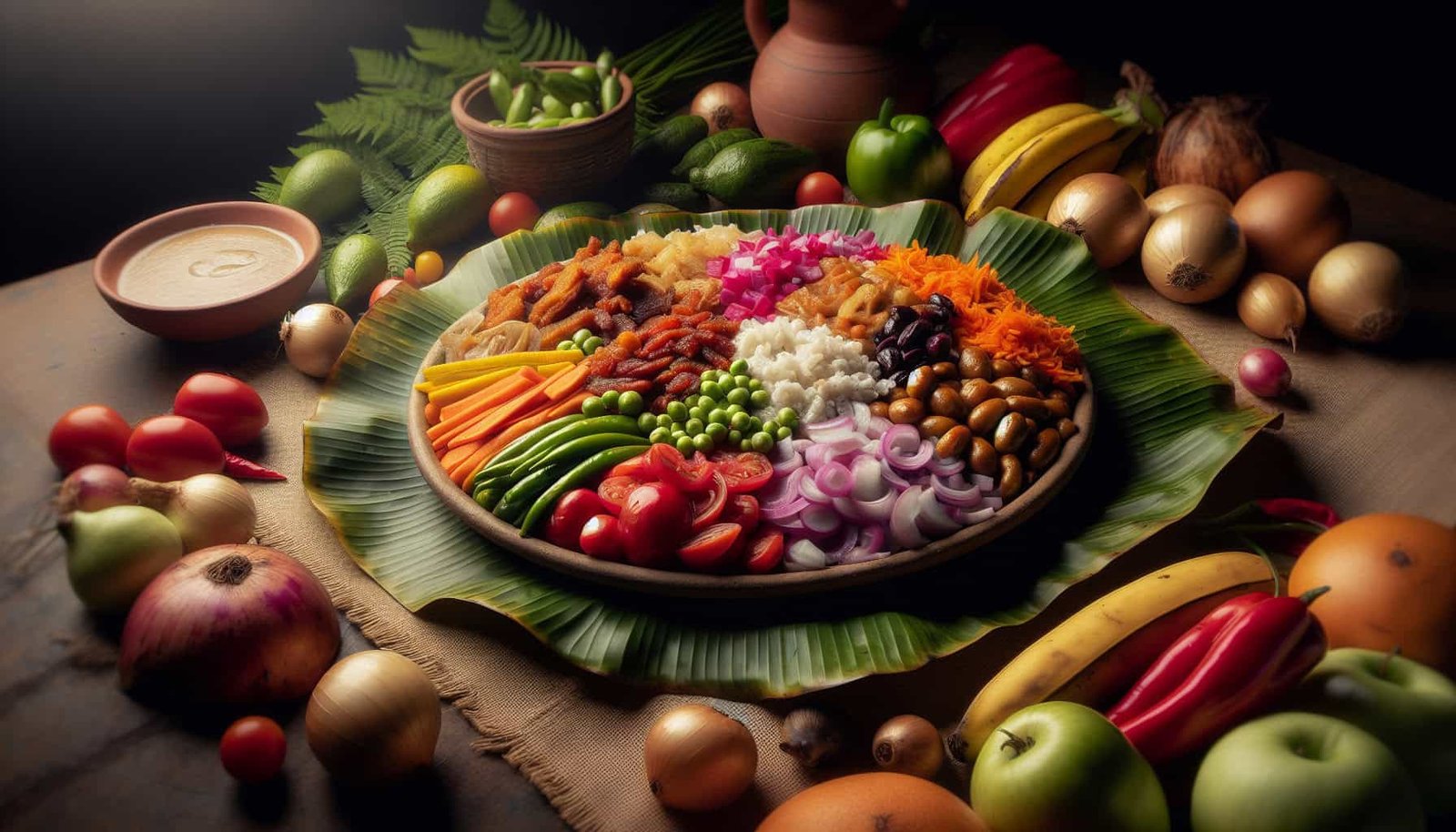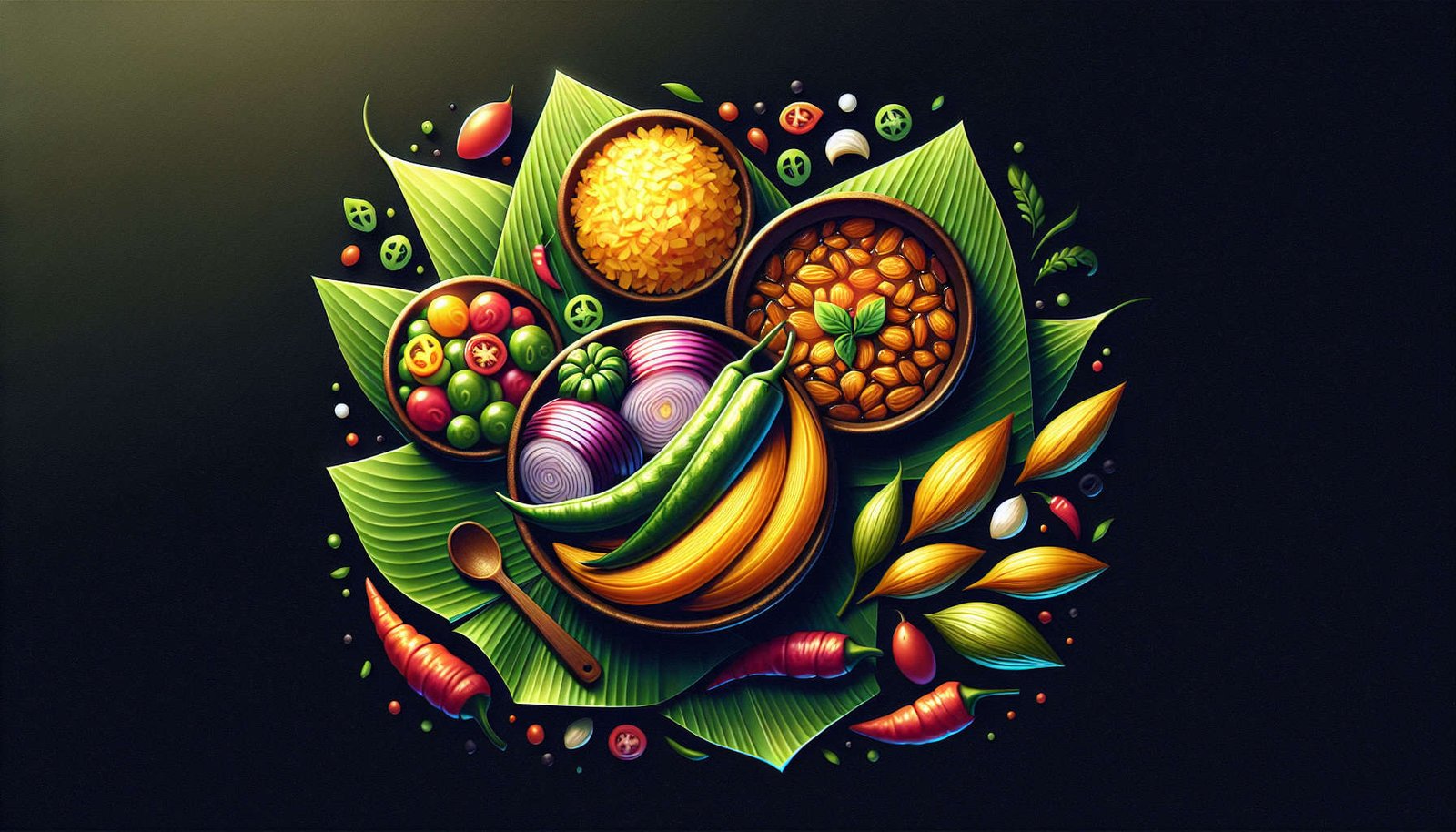In Nicaragua, the vibrant and diverse culinary world is deeply rooted in the country’s rich agricultural practices. From hearty stews to traditional corn-based foods, Nicaraguan dishes offer a mouthwatering reflection of the local farmers’ dedication and the natural resources that shape the nation’s cuisine. By exploring the traditional dishes of Nicaragua, you embark on a delightful journey through the country’s agricultural landscape, savoring the flavors and learning about the farming traditions that have shaped the nation’s food culture. So, let’s discover the array of typical Nicaraguan dishes that not only satisfy your taste buds but also offer a glimpse into the country’s agricultural practices.

Traditional Nicaraguan Cuisine
Introduction to Nicaraguan cuisine
Nicaraguan cuisine is a vibrant and diverse fusion of indigenous, Spanish, and African culinary traditions. The country’s agricultural practices have a significant influence on the dishes that define Nicaraguan cuisine. With its rich volcanic soil, favorable climate, and abundant natural resources, Nicaragua is blessed with a wide variety of agricultural produce that forms the foundation of its traditional dishes.
Influence of agricultural practices on Nicaraguan dishes
Agriculture plays a crucial role in shaping Nicaraguan cuisine. The reliance on locally sourced ingredients has not only sustained the population but also given rise to unique culinary techniques and flavor profiles. The traditional dishes of Nicaragua showcase the freshest ingredients cultivated in its fertile lands and reflect the deep connection between the country’s agricultural practices and its rich food culture.
Corn-Based Dishes
Importance of corn in Nicaraguan agriculture
Corn, or maize, is considered the staple crop of Nicaragua and holds immense cultural significance. It is grown throughout the country as a primary food source and is a vital component of many traditional dishes. Nicaraguan agriculture thrives on the cultivation and consumption of corn, showcasing its versatility and adaptability as an ingredient.
Gallo Pinto
One of the most beloved Nicaraguan dishes is Gallo Pinto, a hearty and flavorful combination of rice and beans. The dish is a reflection of the country’s agricultural practices, as it showcases the importance of beans as a major crop alongside the staple grain, rice. Gallo Pinto is often eaten for breakfast or as a side dish and is typically accompanied by eggs, cheese, and fried plantains.
Nacatamal
Another famous corn-based dish in Nicaragua is Nacatamal. This traditional dish is a true labor of love, requiring hours of preparation. Nacatamal consists of a corn-based dough wrapped around a savory filling of pork, rice, and vegetables. The dish is then carefully wrapped in a banana leaf and steamed to perfection. Nacatamal perfectly captures the essence of Nicaraguan agriculture through its use of fresh corn, pork raised on local farms, and the inclusion of abundant vegetables.
Bean-Based Dishes
Central role of beans in Nicaraguan agriculture
Beans, just like corn, play a central role in Nicaraguan agriculture and cuisine. They are a valuable source of protein and are cultivated in abundance across the country. Nicaraguans have perfected the art of creating delicious and wholesome bean-based dishes that feature prominently in their everyday meals.
Indio Viejo
Indio Viejo is a hearty and flavorful dish that combines cornmeal, beans, meat, and an array of vegetables. The name translates to “Old Indian” and pays homage to Nicaragua’s indigenous heritage. This traditional dish highlights the country’s agricultural practices by incorporating ingredients like locally grown beans, maize, and a variety of vegetables.
Vigorón
Vigorón is a popular street food dish that exemplifies the Nicaraguan love for beans. It consists of boiled yucca, chicharrones (fried pork rinds), and a tangy cabbage salad. The dish is usually served on a banana leaf and is enjoyed with a side of bean salsa. Vigorón showcases the versatility of beans in Nicaraguan cuisine and celebrates the country’s agricultural bounty.
Plantain-Based Dishes
Abundance of plantains in Nicaraguan cuisine and agriculture
Plantains, a close relative of bananas, are a staple ingredient in Nicaraguan cuisine. These starchy fruits are versatile and can be prepared in numerous ways. Plantains are a common sight in Nicaraguan agriculture, with vast plantations dedicated to their cultivation.
Maduros con Queso
Maduros con Queso is a simple yet delightful dish that features ripe plantains fried to golden perfection and served with a generous drizzle of melted cheese. The sweetness of the plantains combined with the savory richness of the cheese creates a unique flavor combination that is adored by locals and visitors alike. This dish perfectly showcases the abundance of plantains in Nicaraguan agriculture and highlights their versatility in culinary creations.
Tostones
Tostones, also known as patacones, are another beloved plantain-based dish in Nicaragua. This savory snack is made by thinly slicing and double frying unripe plantains until crispy. Tostones are often enjoyed with a side of beans, salsa, or guacamole. The versatility of plantains in Nicaraguan cuisine is evident in dishes like Tostones, where the fruit takes on a completely different flavor and texture profile when unripe.

Yucca-Based Dishes
Significance of yucca in Nicaraguan agriculture
Yucca, or cassava, is an important crop in Nicaraguan agriculture and plays a significant role in the country’s cuisine. This root vegetable is known for its versatility and is used to create an array of delicious dishes.
Vigorón
As mentioned earlier, Vigorón is a popular street food dish that features yucca as one of its main components. The boiled yucca adds a unique texture and taste to the dish, complementing the other ingredients perfectly and highlighting the agricultural bounty of Nicaragua.
Tajadas
Tajadas are thin slices of yucca that are fried until crispy and golden. This popular side dish is enjoyed with various meals and is often served alongside meat or fish. The simplicity of Tajadas allows the natural flavors of yucca to shine through, giving diners a taste of Nicaraguan agriculture with every bite.
Seafood Dishes
Coastal influence on Nicaraguan culinary practices
Nicaragua’s extensive coastline and proximity to the Caribbean Sea and the Pacific Ocean have a profound influence on its culinary traditions. The coastal regions boast a rich seafood culture, with fishing playing a vital role in the local economy and cuisine.
Vigorous fishing industry
Fishing has been a significant part of Nicaraguan agricultural practices for centuries. The country’s fishing industry thrives on the bountiful marine resources found along its shores, ranging from lobster and shrimp to a variety of fish. The coastal communities have developed unique cooking methods and flavors that showcase the abundance of seafood in Nicaraguan agriculture.
Sopa de Mariscos
Sopa de Mariscos, or Seafood Soup, is a flavorful and hearty dish that represents the coastal influences on Nicaraguan cuisine. This vibrant soup is filled with an assortment of fresh seafood such as fish, shrimp, crab, and clams, along with a medley of vegetables. Sopa de Mariscos demonstrates the deep connection between Nicaraguan agriculture and the bountiful treasures of the sea, creating a delightful symphony of flavors.

Livestock-Based Dishes
Livestock farming in Nicaraguan agriculture
Livestock farming plays a vital role in Nicaraguan agriculture, with cattle and pigs being reared for their meat. The availability of fresh and high-quality meat has given rise to several traditional dishes that have become cornerstones of Nicaraguan cuisine.
Nacatamal
Nacatamal, as mentioned earlier, is a dish that showcases the agricultural practices surrounding livestock farming. This savory treat features pork as one of its key ingredients. The meat used in Nacatamal is often sourced from local farms, ensuring its quality and freshness. Nacatamal’s connection to Nicaraguan agriculture is not only through its use of local meat but also the incorporation of cornmeal and various vegetables found in the fertile lands.
Vigorón
Although Vigorón has already been mentioned in the context of bean-based dishes, it also highlights the influence of livestock farming in Nicaragua. Chicharrones, one of the essential components of Vigorón, are made from fried pork rinds. The pork used in this dish is sourced from local farms, ensuring a sustainable and traceable supply chain that supports the country’s agricultural industry.
Fruit-Based Dishes
Abundance of tropical fruits in Nicaraguan agriculture
Nicaragua’s tropical climate provides ideal conditions for the cultivation of a wide variety of fruits. The abundance of these flavorful and nutritious fruits has given rise to numerous fruit-based dishes that are enjoyed throughout the country.
Vigorón
Vigorón, once again, makes an appearance due to its versatility in showcasing different agricultural produce. This time, the focus is on the tangy cabbage salad that accompanies the dish. The salad often incorporates tropical fruits such as pineapple and orange, lending a refreshing and vibrant flavor profile to the overall dish.
Indio Viejo
Indio Viejo, in addition to its usage of cornmeal and beans, also includes tropical fruits like tomatoes and sour oranges. These fruits contribute to the unique taste and character of the dish, showcasing the diversity of Nicaraguan agriculture and the incorporation of indigenous ingredients.

Coffee-Based Dishes
Importance of coffee production in Nicaraguan agriculture
Coffee production is a significant component of Nicaraguan agriculture and has contributed to the country’s reputation as a producer of high-quality beans. The flavors and aroma of Nicaraguan coffee have made their way into various culinary creations, resulting in delightful coffee-infused dishes.
Torta de Cacao
Torta de Cacao is a decadent chocolate cake that highlights the deep connection between coffee and Nicaraguan agriculture. This moist and rich cake incorporates Nicaraguan coffee as a key ingredient, imparting a unique depth of flavor and an inviting aroma. The cultivation of coffee beans has not only provided economic opportunities for the country but has also enriched its culinary heritage.
Nicaraguan Coffee Cake
Nicaraguan Coffee Cake is another delicious creation that showcases the flavors of Nicaraguan coffee. This delectable dessert combines the richness of coffee with the sweetness of cinnamon and nutmeg, resulting in a flavorful and comforting treat. Nicaraguan Coffee Cake is a testament to the country’s agricultural practices, highlighting the role of coffee farming in shaping its culinary traditions.
Sweets and Desserts
Variety of sweets using agricultural produce
Nicaraguan agricultural practices, with their rich array of crops and fruits, provide the perfect foundation for creating delicious sweets and desserts. The combination of fresh ingredients and traditional techniques results in a delectable assortment of sugary treats.
Arroz con Leche
Arroz con Leche, or Rice Pudding, is a classic Nicaraguan dessert that features prominently in celebratory occasions. This creamy and comforting dessert combines rice, milk, sugar, cinnamon, and sometimes raisins to create a delightful concoction. The ingredients used in Arroz con Leche are all locally sourced and speak to the agricultural abundance of Nicaragua.
Cajeta de Coco
Cajeta de Coco is a traditional Nicaraguan sweet made from coconut and sugar. This indulgent treat is often enjoyed on its own or used as a filling for cakes and pastries. The use of fresh coconut in Cajeta de Coco exemplifies the reliance on locally sourced ingredients in Nicaraguan agriculture and the resulting culinary delights.
In conclusion, Nicaraguan cuisine is a reflection of the country’s rich agricultural practices. The traditional dishes of Nicaragua represent the deep connection between the land, the crops it yields, and the diverse cultural heritage of its people. From corn-based staples like Gallo Pinto and Nacatamal to the abundant plantain, yucca, and fruit-based dishes, each culinary creation showcases the agricultural bounty and the ingenious techniques that transform these ingredients into mouthwatering delights. Whether it’s the coastal influence on seafood dishes, the livestock-based delicacies, or the infusion of coffee into desserts, Nicaraguan cuisine is an experience that celebrates the country’s agricultural traditions and invites you to savor the flavors and stories of this captivating nation.

